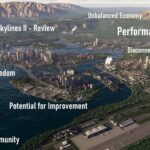The Marvel Cinematic Universe (MCU) has set a high bar for visual effects and innovation in filmmaking. From stunning CGI to groundbreaking motion capture, Marvel Studios is at the forefront of using technology to create cinematic magic. Let’s dive into how Marvel is revolutionizing CGI, motion capture, digital de-aging, and more.
Key Takeaways
- CGI Evolution: Marvel’s use of CGI has transformed how action scenes and fantastical elements are brought to life on screen.
- Motion Capture: Marvel pioneers motion capture technology, enhancing the realism of animated characters.
- Digital De-aging: Digital de-aging allows actors to portray younger versions of themselves, maintaining continuity across films.
- 3D and IMAX Experiences: Marvel’s innovations in 3D and IMAX enhance the immersive experience for audiences.
- Virtual Production: Virtual production techniques are changing how scenes are filmed, blending physical and digital environments seamlessly.
The Evolution of CGI in the Marvel Cinematic Universe
From Basic Effects to Spectacular Scenes
Marvel’s journey with CGI (Computer-Generated Imagery) has been nothing short of revolutionary:
- Early Beginnings: The MCU started with relatively simple CGI effects. Iron Man (2008) used CGI to create the advanced suits and futuristic technology, setting a new standard for superhero films.
- Technological Advancements: As the MCU progressed, so did CGI. Films like Avengers: Endgame (2019) showcased incredibly detailed and realistic effects, from cosmic battles to intricate environments.
- Innovative Designs: Marvel has used CGI to bring a wide range of characters and settings to life, including entire alien worlds and fantastical creatures. This not only enhances visual storytelling but also pushes the boundaries of what’s possible in film.
How Marvel Studios Pioneers Motion Capture Technology
Bringing Characters to Life
Motion capture (mo-cap) technology has allowed Marvel to create lifelike characters and performances:
- Enhanced Realism: Mo-cap captures the movements and expressions of actors, which are then translated into animated characters. This technology has been used for characters like Thanos in Avengers: Infinity War (2018) and Avengers: Endgame (2019), making them more believable and engaging.
- Seamless Integration: By combining actors’ performances with CGI, Marvel ensures that even the most fantastical characters convey genuine emotions and reactions, enhancing the overall storytelling.
- Actor Performance: Actors like Andy Serkis, known for his role as Gollum in The Lord of the Rings, have brought unparalleled depth to their characters through motion capture. This technique allows actors to deliver performances that are both physically and emotionally nuanced.
The Role of Digital De-aging in Marvel Films
Preserving Continuity
Digital de-aging technology has allowed Marvel to maintain continuity across films by portraying characters as they appeared in their younger years:
- Seamless Transitions: Films like Captain Marvel (2019) used de-aging to show younger versions of characters like Nick Fury. This helps keep the story consistent, even when jumping back in time.
- Realistic Results: The technology has advanced significantly, making it possible to de-age actors convincingly. This is especially important in long-running franchises where characters’ ages are critical to the plot.
- Actor Collaboration: De-aging is done in collaboration with actors, ensuring that the final result maintains the essence of their performance while achieving a younger look.
How Marvel Studios is Innovating 3D and IMAX Experiences
Elevating the Viewing Experience
Marvel’s approach to 3D and IMAX has transformed how audiences experience superhero films:
- Enhanced Visuals: Marvel films are often released in 3D and IMAX, providing an immersive viewing experience. The use of these technologies enhances the depth and clarity of visuals, making action scenes and special effects more engaging.
- Filming Techniques: Marvel uses advanced filming techniques to optimize movies for 3D and IMAX formats. This includes using specialized cameras and editing techniques to create a more immersive experience.
- Audience Engagement: By offering these enhanced formats, Marvel ensures that audiences can experience the full impact of their films, making each viewing event special.
The Use of Virtual Production in the Marvel Cinematic Universe
Blending Physical and Digital Worlds
Virtual production is a game-changer in how scenes are filmed and visual effects are integrated:
- Innovative Sets: Marvel uses virtual production techniques, like the Stagecraft technology seen in The Mandalorian (a Star Wars series but influential to Marvel as well), to create realistic environments on set. This allows for seamless integration of digital backgrounds with live-action footage.
- Efficient Filming: Virtual production enables filmmakers to shoot scenes with complex visual effects in a controlled environment, reducing the need for location shoots and enhancing efficiency.
- Creative Flexibility: This technology provides filmmakers with more creative freedom, allowing them to visualize and adjust digital elements in real-time during filming.
Conclusion
Marvel Studios continues to push the boundaries of filmmaking with its advancements in CGI, motion capture, digital de-aging, 3D and IMAX experiences, and virtual production. By leading the way in these areas, Marvel not only creates visually stunning films but also sets new standards for the industry. As technology evolves, we can expect Marvel to keep innovating and delivering cinematic experiences that captivate audiences around the world.















